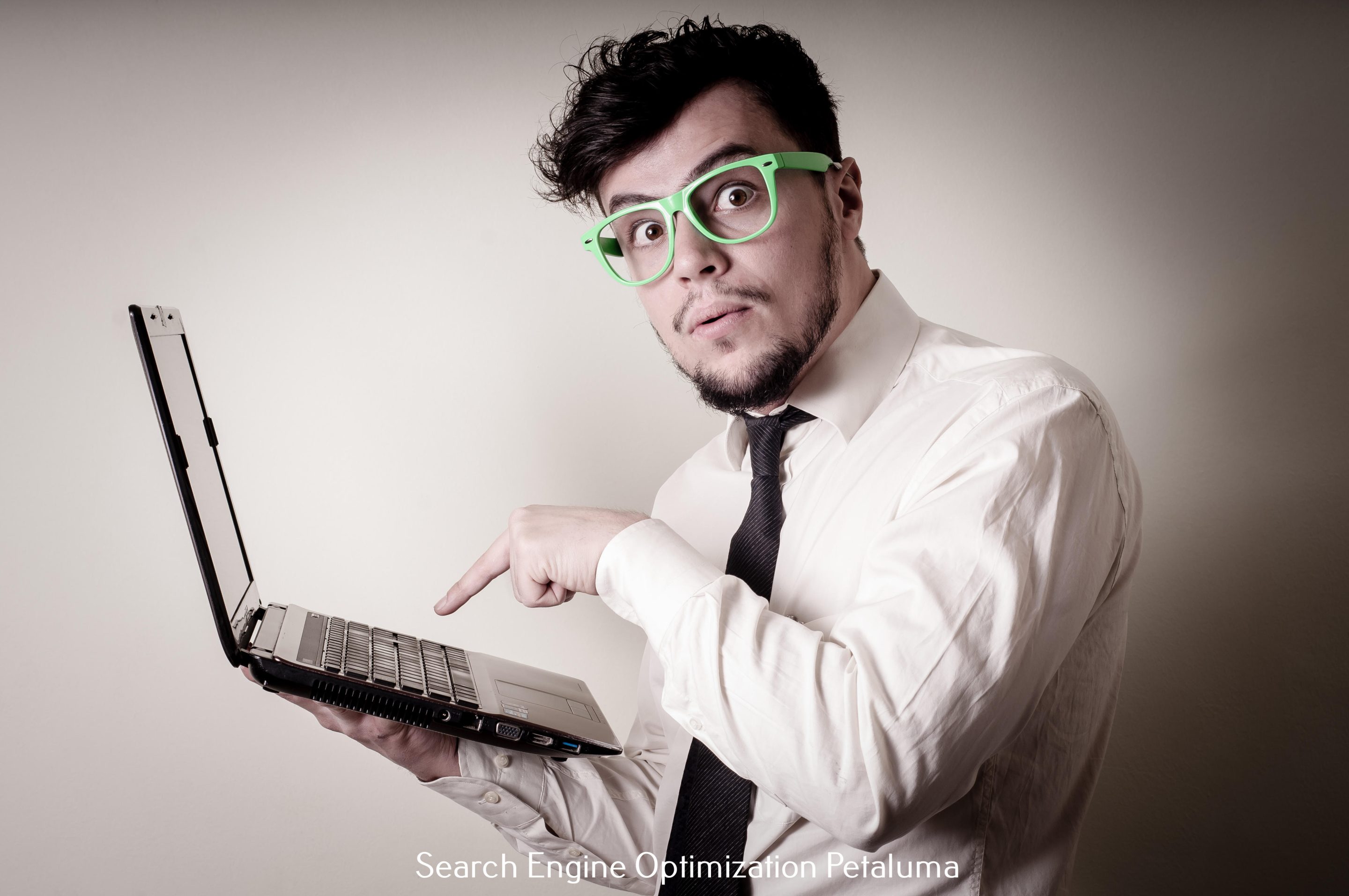Artificial intelligence (AI) has the potential to revolutionize the way small businesses approach digital marketing in 2023. Here are ten ways that small businesses can adapt and use AI in their digital marketing efforts, to increase efficiency, effectiveness, and their overall ROI:
1. Predictive analytics
AI-powered predictive analytics can help small businesses make data-driven decisions about their marketing strategies. This can include forecasting sales, identifying patterns in customer behavior, and optimizing ad targeting. Predictive analytics with AI can be applied in a variety of ways:
-
- Forecasting: Using historical data to make predictions about future sales, demand, or other business metrics.
- Risk assessment: Identifying potential risks and opportunities. For example: predicting customer churn, detecting fraud or identifying potential new customers.
- Personalization: Providing personalized recommendations to customers based on their past behavior and preferences
2. Chatbots
AI-powered chatbots can be used to interact with customers on a business's website, answering their questions and providing personalized recommendations. They can be integrated into a business's website, mobile app, or messaging platforms (such as Facebook Messenger) to interact with customers in real-time. By using natural language processing (NLP) and machine learning, chatbots increasingly will be able to understand and respond to customer inquiries, providing quick, accurate information and assistance.
Chatbots are well-suited for digital marketing because they can be used to automate repetitive or time-consuming tasks, such as answering FAQs or providing product recommendations. Chatbots can be configured to provide personalized responses to customers based on their previous interactions, browsing history, and purchase history, which can help increase customer engagement and conversions.
In the digital marketing world, chatbots can be used for:
- Customer service: providing quick, accurate information to customers, answer questions, and resolve issues.
- Lead generation: Chatbots can be used to capture leads by prompting visitors to provide their contact information in exchange for a valuable offer or discount.
- E-commerce: Chatbots can be used to help customers with product recommendations, ordering and checkout process.
- Market research: Chatbots can be used to gather feedback from customers, helping businesses understand what their ideal clients like and dislike about their products or services
Chatbots are accessible 24/7, and are able to handle multiple requests at the same time. This can save the customer service team a ton of time and effort by handling the initial contact, and even more so for small businesses who lack dedicated support teams.
3. Image and video recognition
AI-powered image and video recognition can help small businesses automatically identify and tag visual content, making it easier to organize and use in marketing campaigns.
AI-powered image and video recognition is a technology that uses machine learning algorithms to automatically analyze and identify objects, features, and attributes in visual content, such as images and videos.
Here are some examples of how small businesses can use AI-powered image and video recognition in their digital marketing efforts:
- Image and video tagging: Automatically tagging images and videos with relevant keywords and metadata, making it easier to organize and search for them.
- Product recognition: Automatically identifying products in images and videos, making it easy to use them in product catalogs, e-commerce sites, and social media campaigns.
- Brand recognition: Identifying logos, brands and trademarks on images and videos which can be used in brand protection and monitoring efforts.
- Object detection: Identifying and tracking objects or people in real-time videos, which can be used in security, surveillance, and marketing.
- Personalization: Using image and video recognition technology to personalize recommendations and campaigns for individual customers based on their browsing and purchase history.
- Augmented Reality: By identifying objects on images and videos, AR technology can overlay digital information, like prices or reviews, on top of them which can be used in-store or online retail experience.
There are many services that are already offering AI-powered image and video recognition capabilities:
- Google's Cloud Vision API provides a wide range of image and video recognition capabilities, including object detection, landmark detection, and text recognition.
- Amazon's Rekognition provides similar capabilities, including facial recognition, text detection, and content moderation.
- Microsoft Azure's Computer Vision API Watson Visual Recognition service provides image and video recognition capabilities, including object detection, facial recognition, and image tagging.
4. Voice search optimization
Voice search optimization is the process of making a website more easily discoverable by voice assistants, such as Amazon's Alexa or Google Home. As the use of voice assistants continues to grow, it's becoming increasingly important for businesses to optimize their websites for voice search in order to remain competitive.
The main difference between traditional text-based search and voice search is the way people use it, in voice search people tend to use natural language, long-tail keywords and complete sentences, instead of the traditional short keywords. In addition, the context, location and device can play a big role in the search query, for example, “Where can I find a good pizza place nearby?”
Here are a few ways small businesses can optimize their website for voice search:
- Target long-tail keywords: Voice search queries tend to be longer and more conversational than text-based search queries.
- Optimize for local search: Voice search often returns local results, so it's important to make sure your business's address, phone number, and other information are accurate and up-to-date.
- Use schema markup: Schema markup is a way to provide structured data to search engines, it can help them understand the content of the website.
- Improve website's loading speed: Voice assistants rely on fast websites to provide quick results, so it's important to optimize your website for speed to improve its chances of being found by a voice search.
- Optimize for mobile: Many voice search queries are conducted on mobile devices, so it's essential to have a mobile-friendly website that is easy to navigate.
- Use natural language: Creating content that answers questions and is written in natural language will make it more likely to be found by a voice search query.
Voice search optimization is a relatively new field, but it's becoming increasingly important as the use of voice assistants continues to grow. By optimizing your website for voice search, small businesses can make it easier for customers to find them through these devices, which can ultimately drive more traffic and conversions.
As the use of voice assistants like Amazon's Alexa and Google Home increases, small businesses will need to optimize their websites for voice search in order to remain competitive.
5. Email marketing
AI-powered email marketing tools can help small businesses improve the effectiveness of their email campaigns by personalizing the content and automating their email campaigns, resulting in better open and click-through rates.
Here some ways that small businesses can use AI in their email marketing:
- Personalization: AI-powered tools can analyze customer data, such as browsing and purchase history, to create personalized email campaigns that are more likely to convert.
- Segmentation: AI-powered tools can segment a business's email list based on demographics, purchase history, behavior, or other criteria, making it easier to send targeted campaigns.
- Predictive sending: AI-powered tools can analyze historical data to predict the best time to send an email, maximizing the chances of it being opened and read.
- Subject line optimization: AI can help a business analyze historical data and suggest subject lines that are most likely to result in a high open rate.
- Lead scoring: AI tools can analyze customer behavior and engagement to score leads, for example, identifying which leads are most likely to convert into customers.
- A/B testing: AI tools can automatically test different versions of emails and subject lines, to help businesses determine which combinations are most effective.
AI supported email marketing tools can help small businesses save time and effort by automating repetitive tasks, such as creating and sending campaigns, and by analyzing data to improve the effectiveness of their campaigns. By personalizing the content of each message and targeting the right people, businesses can increase the chances of their emails being opened, read, and acted upon, ultimately driving more conversions and sales. Many email marketing platforms today, such as MailChimp, Hubspot, or Salesforce Pardot, have some level of AI integration or AI-based features, and that list will only grow from here.
6. Social Media management
AI-powered social media management tools can help small businesses automate and optimize their social media efforts, resulting in better engagement and ROI – and saving time. Here are a few ways small businesses can use AI in their social media:
- Content creation: AI tools can help small businesses generate high-quality, engaging content for their social media platforms, such as text, images, and videos.
- Content scheduling: AI can help small businesses schedule their social media posts at the optimal time, increasing the chances of them being seen and engaged with.
- Audience targeting: AI tools can help small businesses target the right audience on social media, increasing the chances of their content being seen by the right people.
- Sentiment analysis: AI-powered tools can analyze the sentiment of social media posts, comments and reviews, to help businesses understand how people feel about their brand, product or service, and respond accordingly.
- Influencer identification: AI can identify and recommend relevant influencers for a business to collaborate with, increasing the reach of their content.
- Campaign optimization: AI-based tools can analyze the performance of social media campaigns in real-time and optimize them on the fly to improve the results.
AI-powered social media management tools can help small businesses save time and effort by automating repetitive tasks, such as scheduling and publishing content, and by analyzing data to improve the effectiveness of their campaigns. Additionally, by automating and optimizing social media efforts, small businesses can more effectively reach and engage with their target audience, ultimately driving more conversions and sales.
7. SEO
AI-powered SEO tools can help small businesses improve their search engine rankings and drive more traffic to their website. Here are a few ways small businesses can use AI in their SEO efforts:
- Keyword research: AI-powered tools can analyze large amounts of data to identify the most relevant keywords for a business's website, increasing the chances of it ranking for those keywords.
- Content optimization: AI-powered tools can analyze a website's content and suggest changes to optimize it for search engines, including adding new keywords, reorganizing content, or removing low-quality content.
- Backlink analysis: AI-powered tools can analyze the backlinks pointing to a website, identifying which links are valuable and which are harmful, and suggest actions to improve the link profile.
- Competitor analysis: AI-powered tools can analyze competitors' websites and backlink profiles to identify opportunities for improvement.
- On-page optimization: AI-powered tools can optimize website's meta tags, headings, images and other on-page elements that are important for SEO.
- Rank tracking: AI-powered tools can track and report the website's ranking performance, identifying which keywords and pages are generating the most traffic and which need improvement.
AI-powered SEO tools can help small businesses save time and effort by automating repetitive tasks, such as keyword research and content optimization, and by analyzing data to improve the effectiveness of their SEO efforts. By improving search engine rankings, small businesses can drive more traffic to their website, ultimately increasing conversions and sales. Some SEO platforms such as Ahrefs, SEMrush, or Moz, have some level of AI integration or AI-based features, it's worth researching which one best suits the business's needs. It's worth noting that SEO takes time and effort to see results and it's an ongoing process. Additionally, SEO is constantly changing, with search engines updating their algorithms regularly, it's important to stay informed about the latest changes to stay ahead of the competition.
8. Content creation
Content creation is the process of producing written, visual, and other types of content to communicate with an audience, such as blog posts, social media posts, videos, images, infographics, etc. AI-powered content creation tools can help small businesses generate high-quality, unique content that is more likely to engage and convert their target audience.
Here are a few ways small businesses can use AI in their content creation efforts:
- Article generation: AI-powered tools can automatically generate written content, such as blog posts or news articles, based on a set of keywords or a topic.
- Visual content creation: AI-powered tools can automatically generate visual content, such as images, videos, and infographics, based on a set of keywords or a topic.
- Copywriting: AI-powered tools can assist with writing effective headlines, call-to-action, product descriptions or any other types of copy.
- Language Translation: AI-powered tools can automatically translate content into different languages to reach a global audience.
- Sentiment Analysis: AI-powered tools can analyze the sentiment of existing content to identify any areas that may require improvement.
- Content optimization: AI-powered tools can analyze the performance of existing content and suggest changes to improve engagement, such as optimizing headlines, adding images, or reorganizing content.
AI-powered content creation tools can help small businesses save time and effort by automating repetitive tasks, such as writing and visual content creation, and by analyzing data to improve the effectiveness of their content. By generating high-quality, unique content, small businesses can increase the chances of their content being seen, read, and shared, ultimately driving more traffic and conversions. Tools, such as Articoolo, Quillbot, or Persado, but also many other general AI platforms, like GPT-3 have the capability of generating content. Additionally, it's important to note that these AI-powered tools are not meant to replace human creativity but rather to assist the content creation process and help businesses to produce more content in less time, with better quality. The generated content can serve as a starting point for human writers and editors to improve and optimize it.
9. Pricing Optimization
Pricing optimization is the process of determining the optimal price for a product or service based on a combination of factors such as market demand, competition, and production costs. AI-powered price optimization tools can help small businesses improve their pricing strategy, resulting in better profitability and revenue growth.
Here are a few ways small businesses can use AI with price optimization:
- Market demand analysis: AI powered tools can analyze data on market demand for a product or service, providing insights into how consumers are responding to different price points.
- Competitor analysis: AI tools can analyze competitor prices, allowing businesses to adjust their prices to remain competitive.
- Sales forecasting: AI-powered tools can analyze historical sales data to forecast future sales, helping businesses determine the optimal price for a product or service.
- Personalization: AI software can analyze consumer data, such as browsing and purchase history, to create personalized pricing strategies that are more likely to convert.
- Dynamic pricing: AI can automatically adjust prices in real-time based on factors such as demand, supply, and competition.
- Price testing: AI tools can run experiments, testing different prices and pricing strategies, to identify the best price point for a product or service.
AI-powered pricing optimization tools can help small businesses save time and effort by automating repetitive tasks including market demand analysis and competitor analysis, as well as by analyzing data to improve the effectiveness of their pricing strategies. By optimizing prices, small businesses can improve profitability, increase sales and revenue, and remain competitive.
10. Lead generation
Lead generation is the process of identifying and capturing contact information from potential customers who have shown an interest in a business's products or services. AI-powered lead generation tools can help small businesses improve their lead generation efforts by automating repetitive tasks, such as lead capture and lead nurturing, and by analyzing data to improve the effectiveness of their lead generation strategies. Here are a few ways small businesses can use AI in their lead generation:
- Lead capture: AI tools can automatically capture lead information, such as name, email address, and phone number, when visitors fill out a form on a website or engage with a chatbot.
- Lead scoring: AI based tools can analyze lead data and assign a score based on the likelihood of them becoming a customer, helping businesses prioritize which leads to follow up on.
- Lead nurturing: AI software can automatically send targeted and personalized emails or other communications to leads based on their interests, behavior, and lead score.
- Predictive lead generation: AI powered tools can analyze data to predict which individuals or companies are most likely to become customers, and target them with personalized communications.
- Email drip campaigns: AI can automatically send a series of emails to leads over a period of time, gradually nurturing them until they are ready to become a customer.
10. Ad Targeting
Here are a few ways small businesses can use AI in their paid ad targeting efforts:
- Audience identification: AI can help analyze consumer data, such as browsing and purchase history, to identify the most likely audience for an ad campaign, increasing the chances of it being seen by the right people.
- Ad placement: AI can analyze data on consumer behavior and engagement to determine the most effective placement for an ad, increasing the chances of it being seen and clicked on.
- Predictive modeling: AI software can help to analyze data and predict which individuals/companies are most likely to become customers, and target them with personalized ad campaigns.
- Smart bidding: analyze data on consumer behavior, competition, and other factors to optimize bid strategies, making the most efficient use of ad budgets.
- Real-time optimization: AI tools can analyze the performance of ad campaigns in real-time, making adjustments to optimize the performance.
- Ad fraud detection: AI software can automatically detect and eliminate fraudulent clicks or impressions on ads, protecting businesses from wasting their ad spend on false engagement.
10. Virtual reality
- Small businesses can use AI-powered virtual reality technology to create immersive virtual experiences for their customers, increasing brand engagement and loyalty. Here are a few ways small businesses can use AI along with virtual reality:
- Personalized experiences: AI-powered VR tools can analyze user data, such as preferences and behavior, to create personalized VR experiences that are tailored to each individual user.
- AI-controlled avatars: create virtual avatars that can interact with users in a more realistic and natural way, such as responding to users' gestures, facial expressions, and spoken commands.
- Adaptive scenarios: analyze user behavior and adjust the virtual environment in real-time, creating a more dynamic and immersive experience.
- Predictive analytics: analyze data on user behavior and usage to predict which VR experiences are most likely to be popular and engaging, allowing businesses to focus on creating those experiences.
- Natural Language Processing (NLP): better understand and respond to spoken commands, making it easier for users to interact with the virtual environment.
- Object recognition: AI-powered VR tools can use object recognition to recognize and interact with real-world objects in the virtual environment, like a VR headset or controllers.
Overall, it's worth noting that AI in digital marketing can bring benefits but it also will have its limitations and risks, and it's important to keep in mind that AI is just a tool. The key to successful digital marketing is understanding and knowing your target audience, and making use of the data in a responsible way. Also, small businesses may need to invest in the technology, training, and expertise required to properly utilize AI in their digital marketing efforts.






































0 Comments